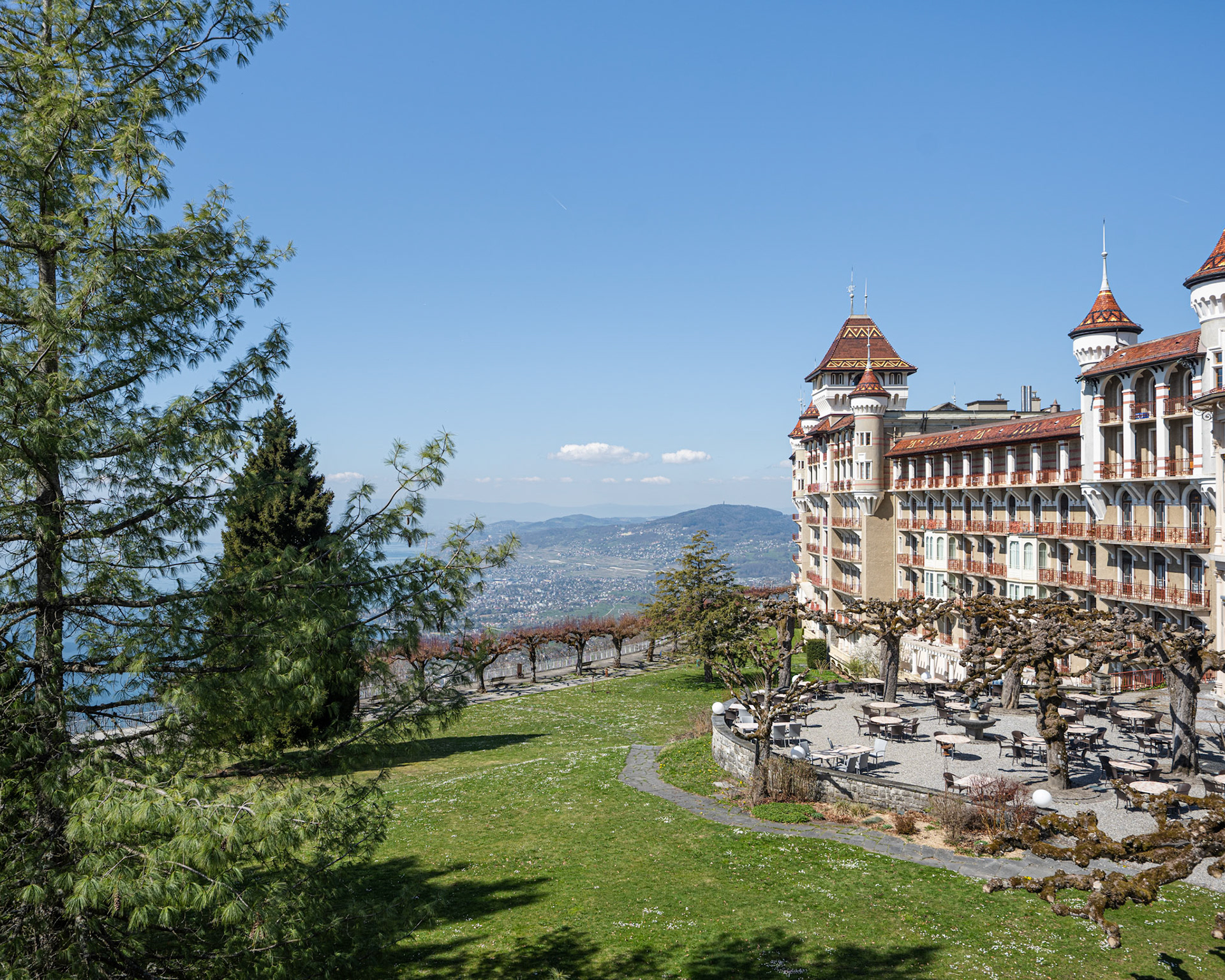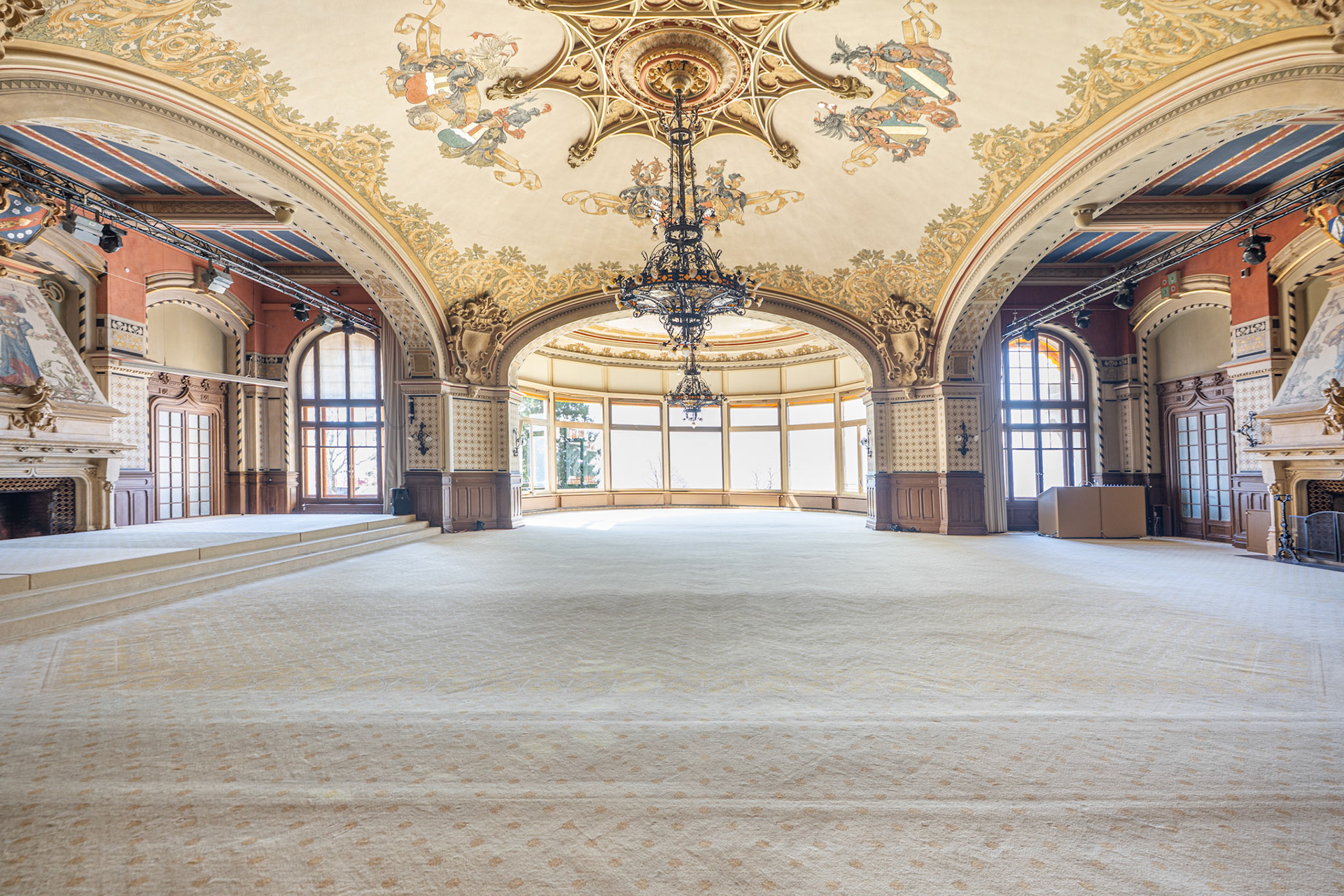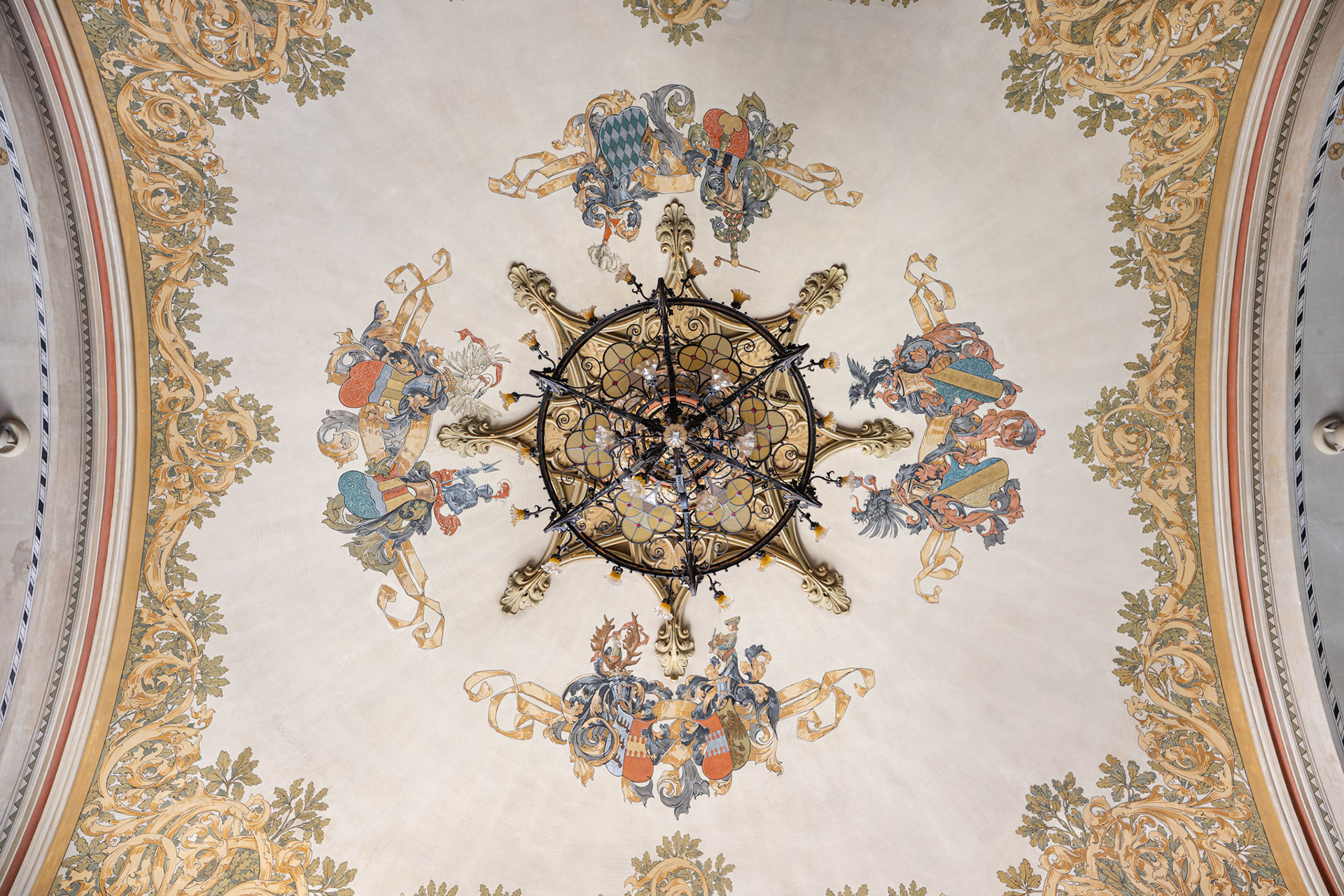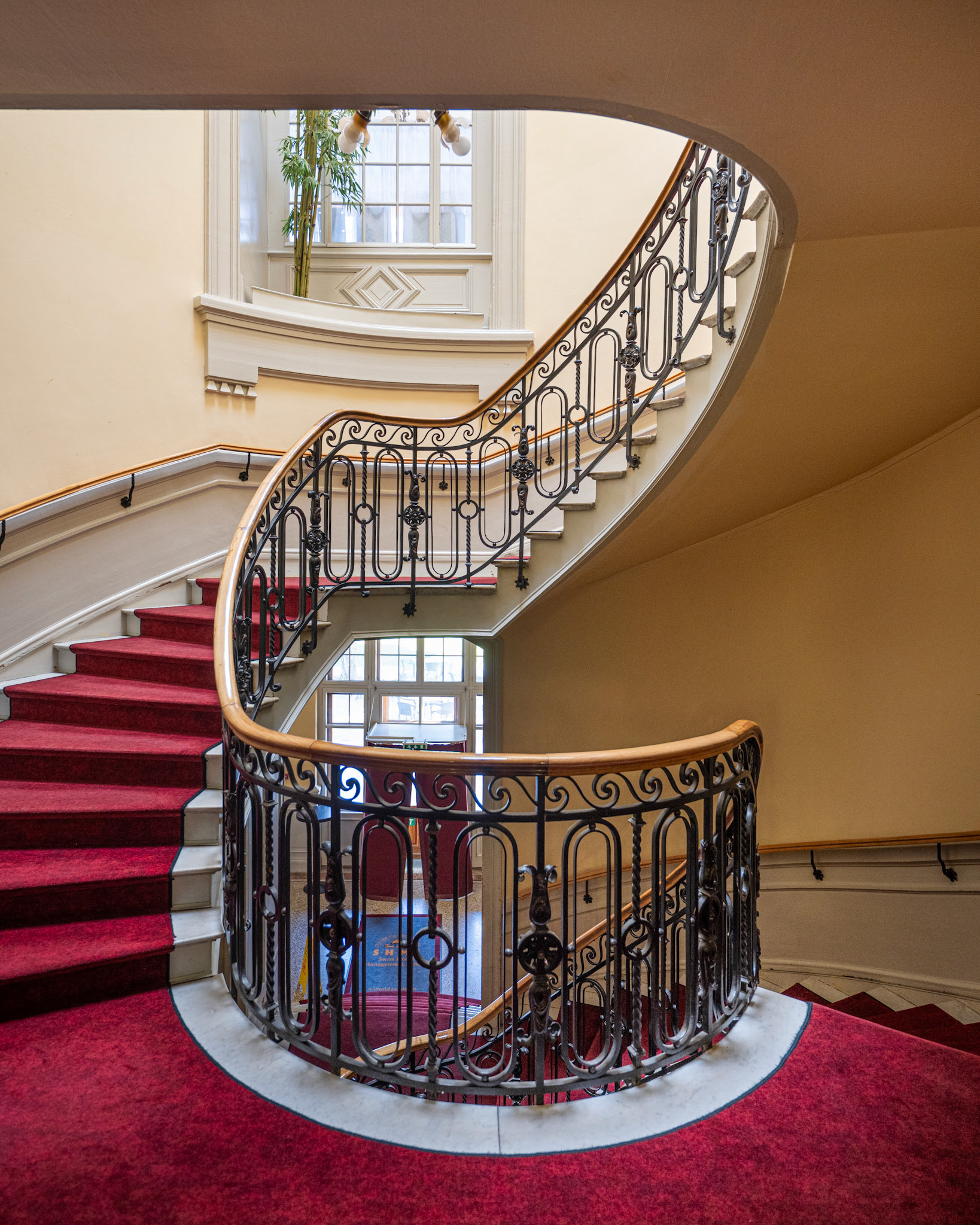Perched high above Montreux, the Caux Palace was designed by Swiss architect Eugène Jost. Construction began in early 1900 with a 400-meter-long support wall, built to adapt to the sloping terrain. This foundation made it possible to create a garden and promenade at the foot of the hotel. With up to 800 workers on site during the building phase, the richly decorated hotel - adorned with turrets, towers, and colorful roof tiles - was completed in just over two years. It was officially inaugurated on July 7, 1902.

Caux Palace, promenade and garden
The Caux Palace quickly became a renowned destination, attracting guests from around the world, including Rudyard Kipling, John D. Rockefeller, Prince Ibn Saud, future king of Saudi Arabia, and the Maharajah of Baroda. The Maharajah’s personal room was furnished with lemon tree wood furniture, which has been preserved to this day.

Caux Palace - main hall
The fireplace and ceiling frescoes of the main hall were created by Bernese painter Otto Haberer and have been restored in 2008.

main hall

fireplace fresco by Otto Haberer

chandelier and ceiling fresco by Otto Haberer
The Baroque-style theater located right next to the main hall can accomodate 385 spectators.

theatre with Baroque-style decorations

Caux Palace - theatre
The First World War and the later economic crash plunged the Caux Palace into financial difficulties. During the Second World War, the Swiss government repurposed the building as a detention center for British soldiers, and later as a shelter for Italian civilians and more than 1,500 Hungarian Jews who had escaped Budapest aboard the Kastner train.
In 1946, the palace and several neighboring buildings were acquired by the Moral Re-Armament movement, transforming the site into a conference center dedicated to global dialogue and political reconciliation. These meetings were attended, among others, by German Chancellor Konrad Adenauer and French Foreign Minister Robert Schuman.

meeting room
Since 1995, the Swiss Hotel Management School has occupied a significant part of the building outside the main conference season, enabling much-needed renovations and ongoing maintenance. Caux Palace is still under the ownership of the Moral Re-Armament movement, known since 2001 as "Initiatives of Change".

spiral staircase

spiral staircase

spiral staircase
You may also like